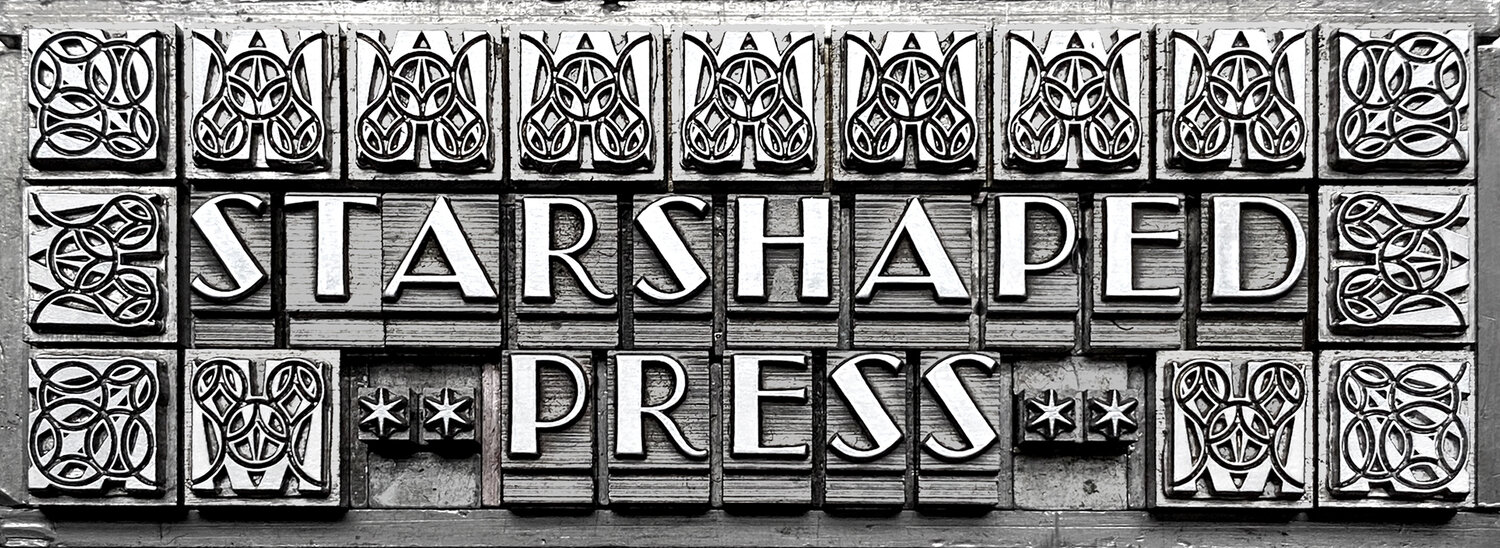A type family refers to all of the fonts within a typeface, i.e., Bernhard Gothic is the family name while all of the attributes (weight, roman vs. italic, size, etc.) make up individual fonts. As you can see, I have a large collection of this typeface, though not a complete family.
The wonderful thing about having a full or nearly full type family is how much flexibility it gives you within your design work. It doesn't have to be fancy type; in fact, I find the more basic it is, the better. By keeping my type proofed on these 'family' cards, I can easily carry them to type sales to see what 'members' of the family are missing. If I've got 8, 10 and 14 pt. News Gothic, I know it would be great to find 12. Looking at boring old 12 pt. News Gothic amidst a sea of type might not grab me, but if I know I could complete a family with it, I'll snatch it up.
If I have a family for which a digital version has been made then I lay out a cheat sheet to be able to design quickly with my type family in InDesign.
This is a screen grab of a file that has scans of my proof sheets on the left and a digital fake-out on the right. The digital versions are hardly ever exact, and as you improve with typesetting you'll be able to spot the differences immediately. However, if I want to push some type around on a screen before setting it, this is a really great way to select the family, set them as character styles and go for it. Having different weights and sizes makes it easy to add visual interest and hierarchy to your design without being overwhelmed by so many possible typeface choices.
Here are a few examples of projects that work within the Bernhard Gothic family. This stationery set uses 8 pt. Medium and Light, with 12 pt. Bold popping out the name. Helpful hint? If you're working in email addresses, go down a point size with the '@' sign. This one here is 6 pt. They were not designed to read nicely with a line of type so they often appear heavy and ridiculous unless you tone them down in size. Add a brass above and below it and you're good to go.
This invitation uses 12 Medium, 10 Medium and 8 Light and Italic. Keeping it simple allows for the more fun type at the top to shine.
The back side of this cd sleeve has it all in tiny sizes. There is 6 pt. Italic, Medium and Light in each line; this is easy to set and still provides a visual break between each piece of info. The lowercase credits at the bottom are in 8 pt. Light.
I also keep a spreadsheet handy to find this family of type as it is spread out all over the composing area of my studio. I don't need to know what it looks like for this spreadsheet, just where to find it.
Having a book of proofs of the type as well as the spreadsheet is a great way to double check your collection. Every once in a while a new typeface comes in and gets on to one but not the other. Eventually we find it and remedy the problem so that typeface can get to work asap.
Working within a type family is a great exercise, both digitally and in letterpress. It's an easy way to communicate effectively but with class and purpose. And it helps you develop a stronger eye for how your type works together, which makes you faster and more competent with setting.






